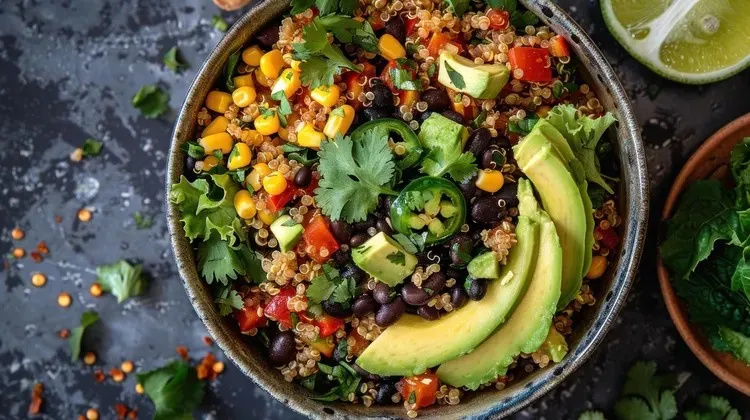Heal Your Stomachache with Food: A Guide to Soothing Your Gut
Stomachaches are a common complaint, whether caused by indigestion, gas, bloating, acid reflux, or something more serious like food sensitivities or stress. While severe or persistent stomach pain should always be checked by a healthcare professional, many mild stomachaches can be soothed or even prevented with the right foods. The key is choosing ingredients that are gentle on the digestive system, reduce inflammation, and promote gut health.

Understanding Stomachaches: Causes and Food’s Role
Before diving into the foods that can help, let’s briefly explore the common causes of stomachaches and how food can play a role in relief:
- Indigestion: Overeating, eating too quickly, or consuming fatty/spicy foods can overwhelm your stomach, leading to discomfort.
- Gas and Bloating: Certain foods (like beans or cruciferous veggies) can produce gas during digestion, causing bloating or cramping.
- Acid Reflux: Acidic or trigger foods (like citrus or caffeine) can irritate the stomach lining or cause acid to flow back into the esophagus.
- Food Sensitivities: Lactose, gluten, or other sensitivities can cause cramping, bloating, or diarrhea.
- Stress or Anxiety: The gut-brain connection means stress can manifest as stomach pain or nausea.
- Infections or Inflammation: Conditions like gastritis or mild food poisoning can cause stomach upset.
The right foods can help by:
- Neutralizing stomach acid
- Reducing inflammation
- Promoting healthy digestion
- Soothing the stomach lining
- Restoring gut microbiome balance
With that in mind, let’s explore the top foods to eat to heal a stomachache, why they work, and how to incorporate them into your diet effectively.
Top Foods to Soothe a Stomachache
These foods are gentle, nutrient-dense, and backed by science for their ability to calm an upset stomach. We’ll also include tips to avoid common pitfalls that could worsen discomfort.
- Bananas
- Why They Help: Bananas are part of the BRAT diet (Bananas, Rice, Applesauce, Toast), a go-to for digestive issues. They’re easy to digest, rich in potassium to restore electrolytes (especially after diarrhea), and contain pectin, a soluble fiber that helps firm up stools and reduce diarrhea.
- Best For: Diarrhea, nausea, or general stomach upset.
- How to Eat Them:
- Eat a ripe banana (yellow with some brown spots) as a standalone snack for quick relief.
- Blend into a smoothie with plain yogurt and a touch of honey for a soothing drink.
- Mash with a sprinkle of cinnamon for a gentle dessert.
- Pro Tip: Avoid unripe (green) bananas, as they’re harder to digest and may worsen bloating.
- Ginger
- Why It Helps: Ginger is a natural anti-inflammatory and anti-nausea remedy, thanks to compounds like gingerol and shogaol. It speeds up gastric emptying, reduces nausea, and soothes irritation in the stomach lining.
- Best For: Nausea, vomiting, indigestion, or bloating.
- How to Eat It:
- Sip ginger tea by steeping 1-2 grams of fresh ginger slices in hot water for 5-10 minutes, with a touch of honey if needed.
- Add grated ginger to soups or broths for a warming, digestion-friendly flavor.
- Chew on crystallized ginger or suck on ginger candies for quick nausea relief.
- Pro Tip: Use fresh or dried ginger rather than sugary ginger ale, which may contain little real ginger and could worsen symptoms due to carbonation.
- Plain Rice (White or Brown)
- Why It Helps: White rice is low in fiber and easy to digest, making it ideal for calming an upset stomach. It absorbs excess stomach acid and provides gentle carbs for energy. Brown rice, while higher in fiber, can be soothing for those who tolerate it.
- Best For: Diarrhea, indigestion or acid reflux.
- How to Eat It:
- Cook plain white rice with water (avoid butter or oil) and eat small portions.
- Make a rice porridge (congee) with extra water for a hydrating, gentle meal.
- Pair with boiled chicken or steamed veggies (like carrots) for a balanced, bland meal.
- Pro Tip: Rinse rice before cooking to remove excess starch, which can reduce stickiness and improve digestibility.
- Applesauce
- Why It Helps: Like bananas, applesauce contains pectin, which helps regulate digestion and firm up stools. It’s gentle on the stomach and provides a mild source of energy without overwhelming the digestive system.
- Best For: Diarrhea, nausea, or sensitive stomachs.
- How to Eat It:
- Choose unsweetened, natural applesauce to avoid added sugars that could irritate the stomach.
- Eat small spoonfuls as a snack or side dish.
- Mix with a pinch of cinnamon or ginger for added soothing benefits.
- Pro Tip: Make your own applesauce by cooking peeled apples with a splash of water until soft, then mashing for a fresh, additive-free option.
- Plain Toast or Crackers
- Why It Helps: Plain, dry carbs like toast or saltine crackers absorb excess stomach acid, reduce nausea, and provide a bland base that’s easy to digest. They’re a staple of the BRAT diet for a reason.
- Best For: Nausea, acid reflux, or indigestion.
- How to Eat It:
- Opt for plain white toast or unsalted crackers to avoid added fats or spices.
- Nibble slowly to prevent overwhelming the stomach.
- Pair with a small amount of applesauce or mashed banana for a gentle combo.
- Pro Tip: Avoid whole-grain or high-fiber versions during a stomachache, as they can be harder to digest.
- Oatmeal
- Why It Helps: Oatmeal is a low-fiber, soothing carb source that’s easy on the stomach. It contains soluble fiber (beta-glucan), which helps regulate digestion and coats the stomach lining to reduce irritation.
- Best For: Acid reflux, indigestion, or hunger-related stomach pain.
- How to Eat It:
- Cook plain rolled oats with water or low-fat milk (if tolerated) for a creamy texture.
- Avoid adding sugar, nuts, or dried fruit, which can irritate a sensitive stomach.
- Add a small amount of mashed banana or a drizzle of honey for mild flavor.
- Pro Tip: Start with small portions and chew thoroughly to aid digestion.
- Plain Yogurt (Probiotic-Rich)
- Why It Helps: Plain, unsweetened yogurt with live cultures (like Lactobacillus) supports gut health by replenishing beneficial bacteria. This can help balance the gut microbiome, reduce bloating, and ease diarrhea.
- Best For: Bloating, diarrhea, or gut inflammation.
- How to Eat It:
- Choose plain, low-fat, or non-dairy yogurt (if lactose-sensitive) with live cultures.
- Eat small portions (½ cup) as a snack or mix with mashed banana or applesauce.
- Avoid flavored yogurts with added sugars, which can worsen stomach upset.
- Pro Tip: If dairy triggers your symptoms, try a non-dairy probiotic like kombucha (in small amounts) or consult a doctor for probiotic supplements.
- Bone Broth
- Why It Helps: Bone broth is rich in gelatin and amino acids like glutamine, which soothe the stomach lining and support gut repair. It’s hydrating, easy to digest, and provides electrolytes to replace losses from diarrhea or vomiting.
- Best For: Nausea, diarrhea, or general digestive upset.
- How to Eat It:
- Sip warm, low-sodium bone broth as a standalone drink.
- Use as a base for a simple soup with rice or boiled carrots.
- Make your own by simmering chicken or beef bones with water, herbs, and a splash of apple cider vinegar.
- Pro Tip: Avoid store-bought broths with added MSG or high sodium, which can irritate the stomach.
- Chamomile or Peppermint Tea
- Why They Help: Chamomile has anti-inflammatory and antispasmodic properties that relax the digestive tract and reduce cramping. Peppermint contains menthol, which soothes the stomach and eases nausea and bloating.
- Best For: Cramps, bloating, nausea, or stress-related stomachaches.
- How to Eat It:
- Steep 1-2 teaspoons of dried chamomile flowers or a peppermint tea bag in hot water for 5–10 minutes.
- Sip slowly, avoiding added sugar or caffeine, which can worsen symptoms.
- Drink 1-2 cups daily, especially before or after meals.
- Pro Tip: Avoid peppermint if you have acid reflux, as it can relax the esophageal sphincter and worsen symptoms.
- Boiled or Steamed Carrots
- Why They Help: Cooked carrots are easy to digest and rich in pectin, which helps regulate digestion and soothe the stomach. They also provide beta-carotene for immune support during recovery.
- Best For: Diarrhea, nausea, or sensitive stomachs.
- How to Eat It:
- Boil or steam carrots until soft, then mash or eat whole with a pinch of salt.
- Add to rice or bone broth for a gentle soup.
- Avoid raw carrots during a stomachache, as they’re harder to digest.
- Pro Tip: Pair with a small amount of plain rice or chicken for a balanced, tummy-friendly meal.
- Coconut Water
- Why It Helps: Coconut water is a natural source of electrolytes like potassium and magnesium, which replenish fluids lost through diarrhea or vomiting. It’s hydrating and gentle on the stomach.
- Best For: Dehydration, diarrhea, or nausea.
- How to Eat It:
- Sip plain, unsweetened coconut water in small amounts throughout the day.
- Dilute with water if the flavor is too strong or sweet.
- Avoid flavored or sweetened versions, which can irritate the stomach.
- Pro Tip: Choose 100% pure coconut water without additives, and store it in the fridge after opening.
- Papaya
- Why It Helps: Papaya contains papain, an enzyme that aids protein digestion, and is rich in fiber and water to support regular bowel movements and reduce bloating. It’s also anti-inflammatory and gentle on the stomach.
- Best For: Bloating, indigestion, or constipation-related stomachaches.
- How to Eat It:
- Eat ripe papaya (soft and orange) as a snack or dessert.
- Blend into a smoothie with plain yogurt and ginger for a digestion-friendly drink.
- Add diced papaya to oatmeal or rice porridge for a sweet, soothing touch.
- Pro Tip: Avoid unripe papaya, as it’s harder to digest and may cause discomfort.
Foods to Avoid During a Stomachache
To prevent worsening your symptoms, steer clear of these foods until your stomach feels better:
- Fatty or Fried Foods: Greasy foods like fries or pizza can slow digestion and irritate the stomach.
- Spicy Foods: Spicy dishes (e.g., chili, hot sauce) can inflame the stomach lining.
- Acidic Foods: Citrus fruits, tomatoes, or vinegar-based foods may aggravate acid reflux.
- Carbonated Drinks: Soda or sparkling water can increase bloating and gas.
- Caffeine and Alcohol: These can irritate the stomach and dehydrate you.
- High-Fiber Foods: Raw veggies, whole grains, or beans can be hard to digest during a stomachache.
- Sugary Foods: Sweets or processed snacks can disrupt gut bacteria and worsen diarrhea.
Additional Tips for Healing a Stomachache with Food
- Eat Small, Frequent Meals: Large meals can overwhelm a sensitive stomach. Opt for small portions every 2–3 hours to ease digestion.
- Stay Hydrated: Sip water, coconut water, or herbal teas throughout the day to prevent dehydration, especially if you have diarrhea or vomiting.
- Chew Thoroughly: Slow, thorough chewing aids digestion and reduces strain on your stomach.
- Keep a Food Diary: Track what you eat and how your stomach responds to identify potential triggers (e.g., dairy, gluten).
- Manage Stress: Stress can exacerbate stomachaches. Pair soothing foods with relaxation techniques like deep breathing or meditation.
- Cook Simply: Avoid heavy seasonings, oils, or complex dishes that could irritate your stomach. Stick to boiled, steamed, or baked preparations.
When to Seek Medical Attention
While these foods can help with mild stomachaches, some symptoms require professional care. Consult a doctor if you experience:
- Severe or persistent pain (lasting more than a few hours)
- Blood in stool or vomit
- High fever or chills
- Unexplained weight loss
- Chronic diarrhea or vomiting
- Signs of dehydration (e.g., dry mouth, dizziness, dark urine)
These could indicate conditions like gastritis, ulcers, food poisoning, or irritable bowel syndrome (IBS), which need medical evaluation.
Final Thoughts
A stomachache doesn’t have to derail your day. By choosing gentle, soothing foods like bananas, ginger, plain rice, and bone broth, you can calm your digestive system, reduce inflammation, and promote healing. These foods work by supporting digestion, restoring electrolytes, and balancing your gut microbiome - all while being easy to prepare and enjoy. Pair these dietary choices with mindful eating habits, proper hydration, and stress management for the best results. If your symptoms persist or worsen, don’t hesitate to seek medical advice. Here’s to a happier, healthier tummy!
Disclaimer: This post is for informational purposes only and not a substitute for medical advice. Always consult a healthcare professional for persistent or severe stomach pain, food sensitivities, or underlying conditions. Dietary changes should be tailored to your specific needs and health status.









